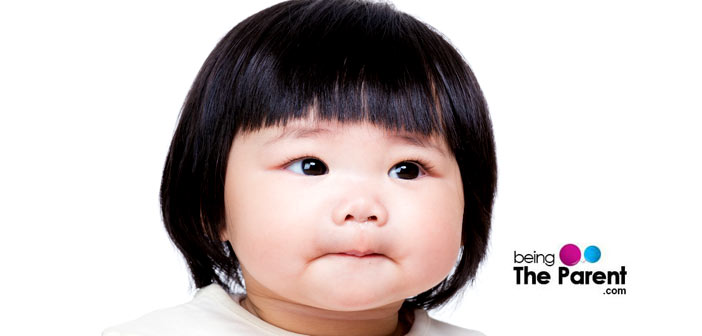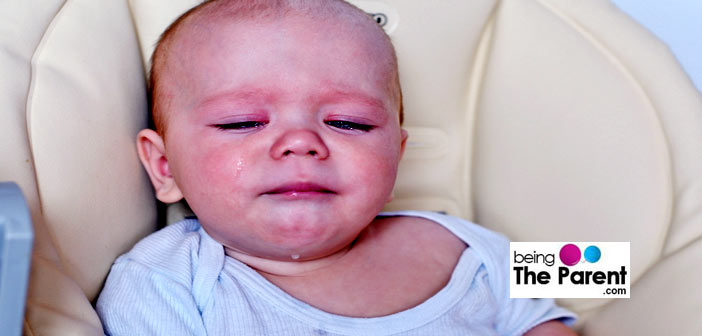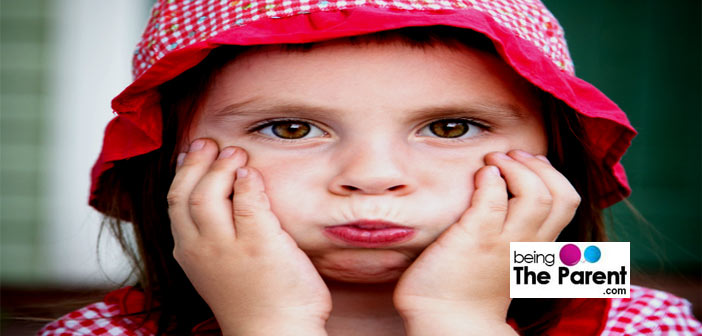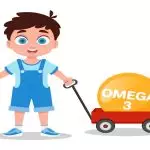
Breath-Holding Spells In Toddlers
4 min readWritten by Editorial Team


One moment they are upset and about to cry, and the next they are on the floor, blue and not breathing. This is enough to send any parent on a panic attack. Some kids hold their breath when they are upset or in pain, to an extent of losing consciousness due to lack of breathing. Some kids hold their breaths till they pass out, and while some dismiss these breath-holding spells as a part and parcel of terrible two’s, yet these breath-holding spells can be terrifying for parents.
While it is no doubt a terrifying experience, such breath-holding spells are not dangerous. Once the child passes out, body’s natural mechanism takes over (like it would when a child sleeps) and they will start breathing normally again. Read on to understand what they are, what to do during one and when to take medical help.
What Are Breath-Holding Spells?
A breath-holding spell is a short period of time when the child ‘stops’ breathing. This is an involuntary reflux that usually immediately follows an emotionally upsetting, painful or frightening experience. It can last up to 1 minute and your child might pass out during this period due to lack of oxygen. However, he will and he should, regain consciousness on his own after a minute and start breathing normally again.
There are two kinds of break-holding spells:
- Cyanotic breath-holding spells:
- Also called blue spells
- Cause: Change in child’s breathing pattern
- Trigger: Anything that upsets or angers the child
- Warning: Parents can usually tell when it is about to occur as the child’s face slowly turns blue
- Pallid breath-holding spells:
- Also called pale spells
- Cause: Slowing of child’s heart rate
- Trigger: Sudden fright (due to shock) or pain
- Warning: Unlike Cyanotic spells, Pallid spells are usually unpredictable, as kids turn very pale very fast
In extreme cases, these spells can cause seizures but with no long term effect. Both these forms of breath-holding spells are involuntary – meaning the child is not doing this on purpose. These spells can be easily differentiated from the ones child does on purpose. During voluntary spells, the child does not pass out or lose consciousness. Also, he would start breathing normally either when he can’t hold it in any more or when he are given what he is crying or creating fuss for.
What Causes Breath-Holding Spells In Children?
Generally, breath-holding spells occur when your child is very angry, upset, frightened, hurt or frustrated. Sometimes an underlying medical condition like some genetic disorders or iron deficiency (see below) can cause these spells.

Are Breath-Holding Spells Common In Toddlers?
Breath-holding spells usually occur in babies between 6 months and 6 years of age. But they are more common between 1-3 years, peaking in the 2nd year. It occurs in about 5% of all healthy children. In 50% of the cases, the spells stop by age 4. By 8, almost 83% of these kids will be spell-free. This is because by 8, children cope with their feelings better. In a very few percentage of cases, the spells may continue to adulthood.
The chances of your child having breath-holding spells are slim, but the probability increases if he has any of the below medical conditions:
- Iron deficiency anemia
- Rett syndrome or Riley-Day syndrome
- Hereditary
What Are The Symptoms Of Breath-Holding Spells?
Watch out for these signs:
- The first sign of a spell is the child gasping and then not breathing
- Depending on the type of spell, then he might turn blue or become very pale (white)
- The child might lose consciousness next
- They might also start shaking due to seizures
Breath-Holding Spells First Aid
If your child is having a breath-holding spell, has turned blue or white, and has passed out, then the first thing is to remain calm and do the following:
- Remove choking hazards: Did your child have something in his mouth just before passing out? Check his mouth and remove any solids inside that can lead to choking once he wakes up
- Avoid accidents: There is a chance your child might have seizures. Move all pieces of furniture and items from near your child to avoid him hitting on anything during a seizure
- Help him breathe: Try to move the child to his sides as it might ease breathing. If he still doesn’t breathe, begin CPR

When To Take The Child To The Doctor After A Breath-Holding Spell?
If your child is having his first breath-holding spell and the consequent passing out, it is advisable to take him to doctor. The doctor will be able to check if
the spell was caused by any underlying medical condition like iron deficiency or some other disorder. If that is the case, the doctor might prescribe treatments (including iron tablets) for the condition, which in turn will reduce or stop the spells.
If there are no underlying medical conditions, then you can discuss with the doctor different ways to prevent future breath-holding spells.
How To Prevent Breath-Holding Spells?
One of the most important thing you need to understand about breath-holding spells is that your child has no control over this. So trying to make him understand – by show of love or anger – will likely bear no results. Another option most parents resort to is to give in to all tantrums so that the child is never upset enough to hold his breath. This also is not an ideal option because children need to be disciplined. If you let your child have their way all the time, you will have a spoilt child in your hands.
What you really need to do is find the right balance between discipline and avoiding any major distress for your child. This can be very tricky and can be only attained through patience, trial and error and above all courage to remain strong during the spells. You can also talk to your child’s doctor about coping strategies for both yourself and the child.
We understand this is a difficult phase for you. Rest assured, it will be sorted out in few hours when the child learns how to cope up with pain and worry in a better way.
Happy parenting!

Editorial Team,
With a rich experience in pregnancy and parenting, our team of experts create insightful, well-curated, and easy-to-read content for our to-be-parents and parents at all stages of parenting.Read more.
Responses (0)
Want curated content sharply tailored for your exact stage of parenting?
Related articles

Dandruff in Toddlers – Causes and Top Home Remedies to Treat

Toddlers Hitting Themselves – Why and How to Stop it?

Glue Ear in Toddlers – What is it, Causes and Symptoms

Importance of Omega 3 Fatty Acids For Toddlers

When Do Toddlers Start Climbing Stairs?

Functional Play For Toddlers – Why is it Important and Top Ways to Encourage
Sponsored content
Discover great local businesses around you for your kids.
Get regular updates, great recommendations and other right stuff at the right time.





